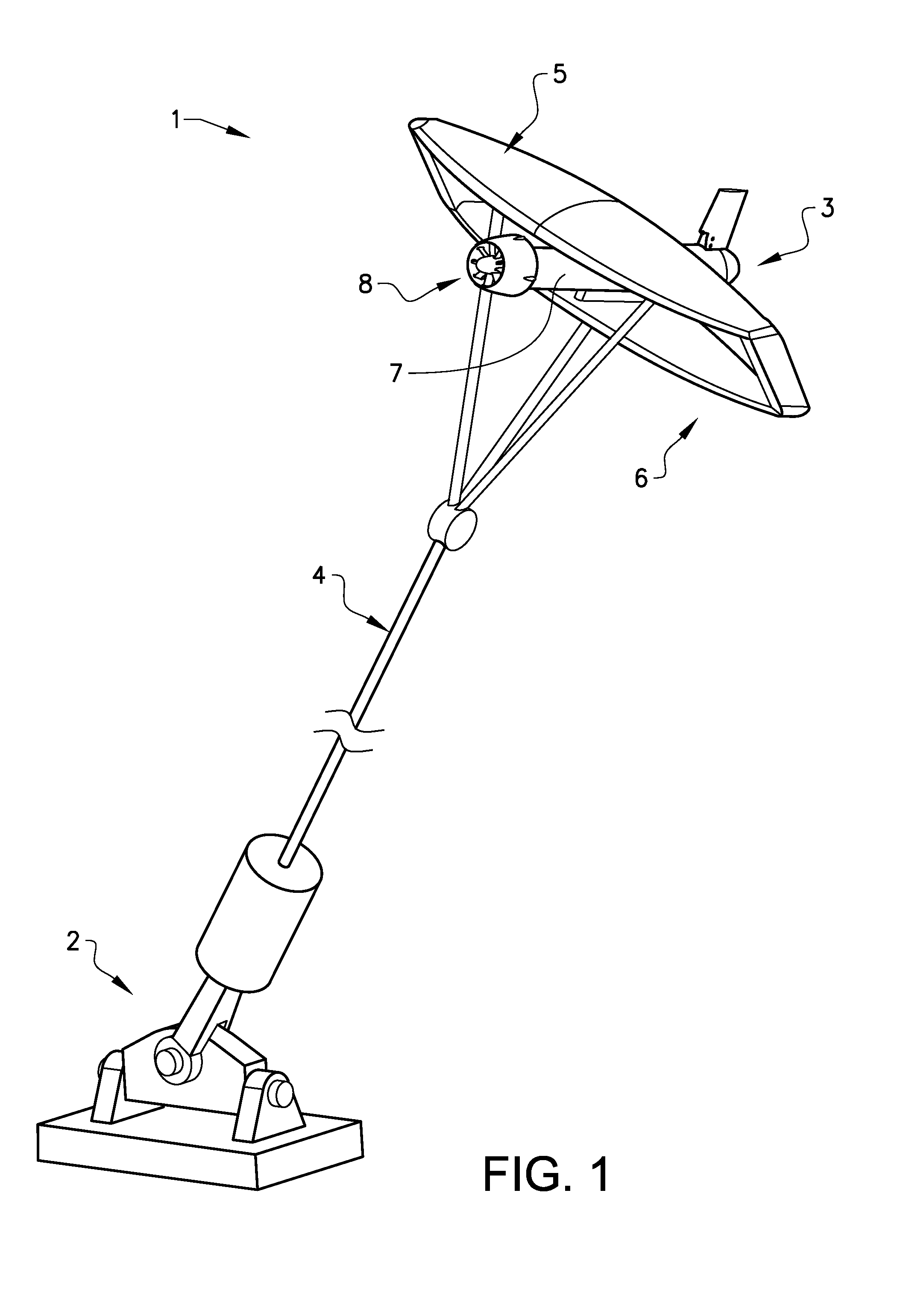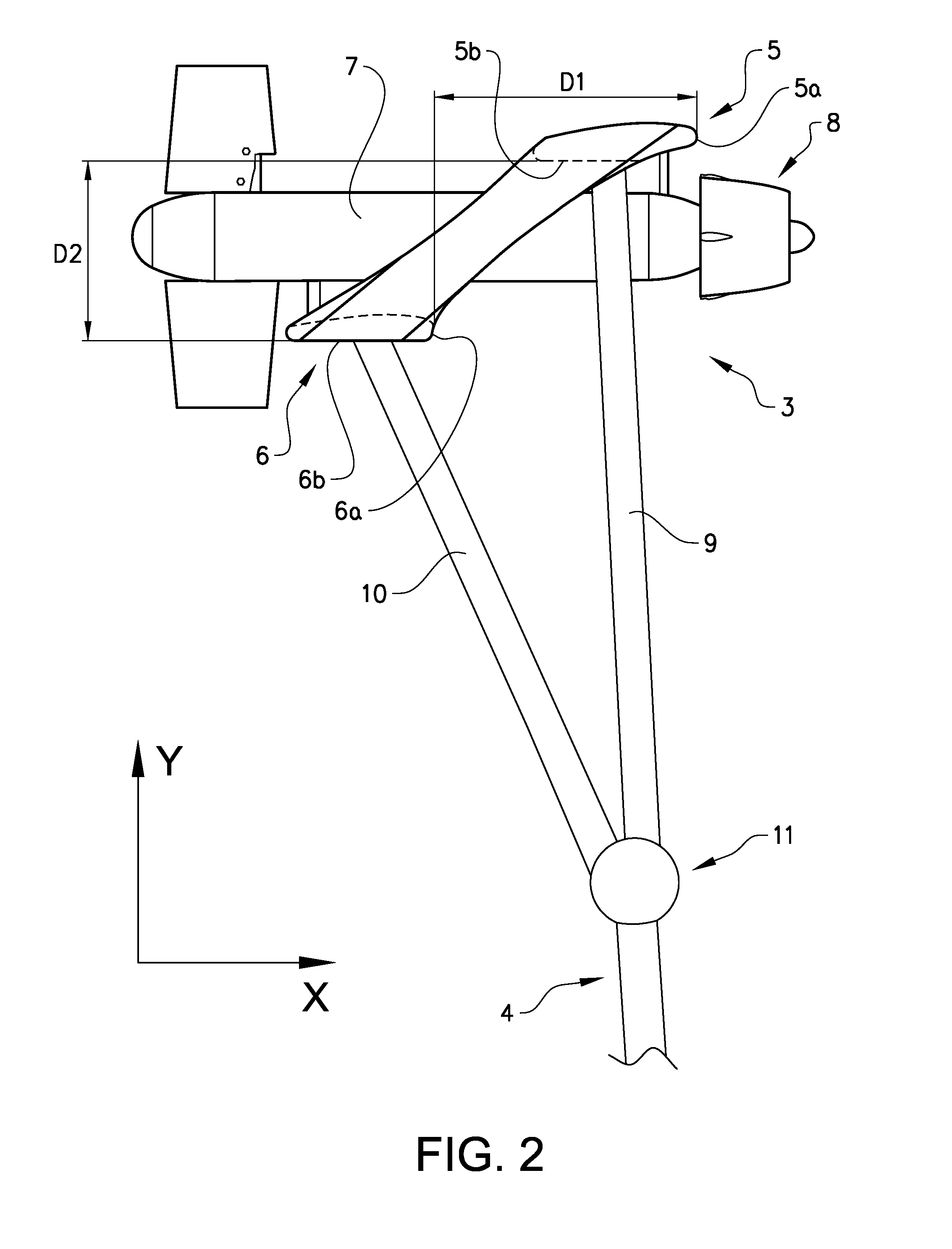Submersible power plant
a technology of submerged power plant and rudder, which is applied in the direction of sea energy generation, waterborne vessels, underwater equipment, etc., can solve the problems of flow separation and vortex creation, and achieve the effect of increasing the efficiency of power production, ensuring safety, and increasing the protection of the rudder
- Summary
- Abstract
- Description
- Claims
- Application Information
AI Technical Summary
Benefits of technology
Problems solved by technology
Method used
Image
Examples
Embodiment Construction
[0030]FIG. 1 schematically shows a power plant 1 according to the invention. The power plant 1 comprises a structure 2 and a vehicle 3. The vehicle 3 is arranged to be secured to the structure 2 by means of at least one tether 4. The vehicle 3 comprises a first wing 5 and a second wing 6. The vehicle 3 is arranged to move in a predetermined trajectory by means of a fluid stream passing the wings of the vehicle 3. The vehicle 3 further comprises a nacelle 7 comprising a generator. The nacelle 7 is attached to a turbine 8. The nacelle 7 is positioned between the first wing 5 and the second wing 6. In FIG. 1 the vehicle 3 comprises a closed wing. The closed wing is described in further detail below. It is also possible for the vehicle 3 to have two separate wings without winglets or two separate wings, with one or both wing having winglets. In FIG. 1 the structure 2 is seen to be placed below the vehicle 3, this can for instance be at the bottom of the ocean or of a sea. It is also pos...
PUM
 Login to View More
Login to View More Abstract
Description
Claims
Application Information
 Login to View More
Login to View More - R&D
- Intellectual Property
- Life Sciences
- Materials
- Tech Scout
- Unparalleled Data Quality
- Higher Quality Content
- 60% Fewer Hallucinations
Browse by: Latest US Patents, China's latest patents, Technical Efficacy Thesaurus, Application Domain, Technology Topic, Popular Technical Reports.
© 2025 PatSnap. All rights reserved.Legal|Privacy policy|Modern Slavery Act Transparency Statement|Sitemap|About US| Contact US: help@patsnap.com



